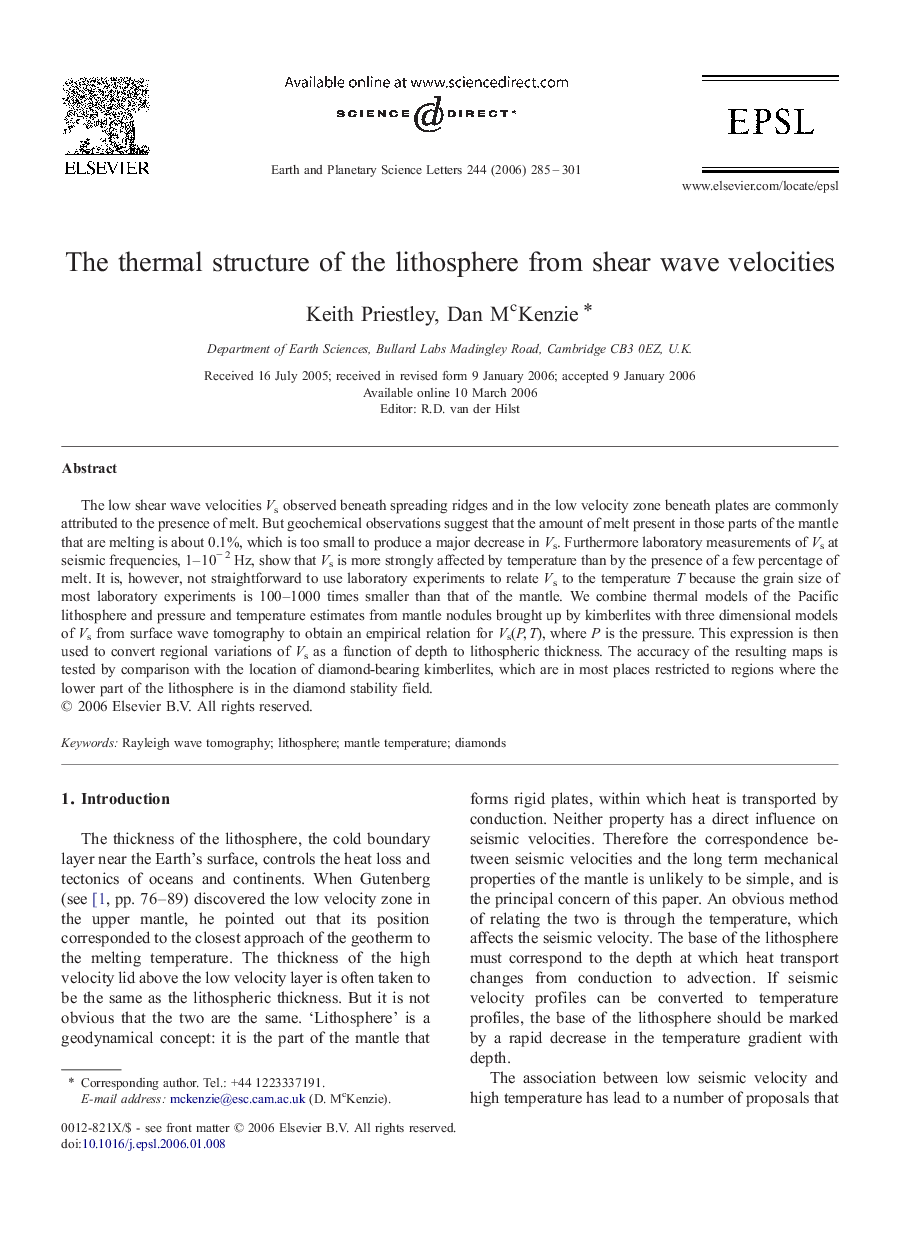| Article ID | Journal | Published Year | Pages | File Type |
|---|---|---|---|---|
| 4681069 | Earth and Planetary Science Letters | 2006 | 17 Pages |
The low shear wave velocities Vs observed beneath spreading ridges and in the low velocity zone beneath plates are commonly attributed to the presence of melt. But geochemical observations suggest that the amount of melt present in those parts of the mantle that are melting is about 0.1%, which is too small to produce a major decrease in Vs. Furthermore laboratory measurements of Vs at seismic frequencies, 1–10− 2 Hz, show that Vs is more strongly affected by temperature than by the presence of a few percentage of melt. It is, however, not straightforward to use laboratory experiments to relate Vs to the temperature T because the grain size of most laboratory experiments is 100–1000 times smaller than that of the mantle. We combine thermal models of the Pacific lithosphere and pressure and temperature estimates from mantle nodules brought up by kimberlites with three dimensional models of Vs from surface wave tomography to obtain an empirical relation for Vs(P, T), where P is the pressure. This expression is then used to convert regional variations of Vs as a function of depth to lithospheric thickness. The accuracy of the resulting maps is tested by comparison with the location of diamond-bearing kimberlites, which are in most places restricted to regions where the lower part of the lithosphere is in the diamond stability field.
